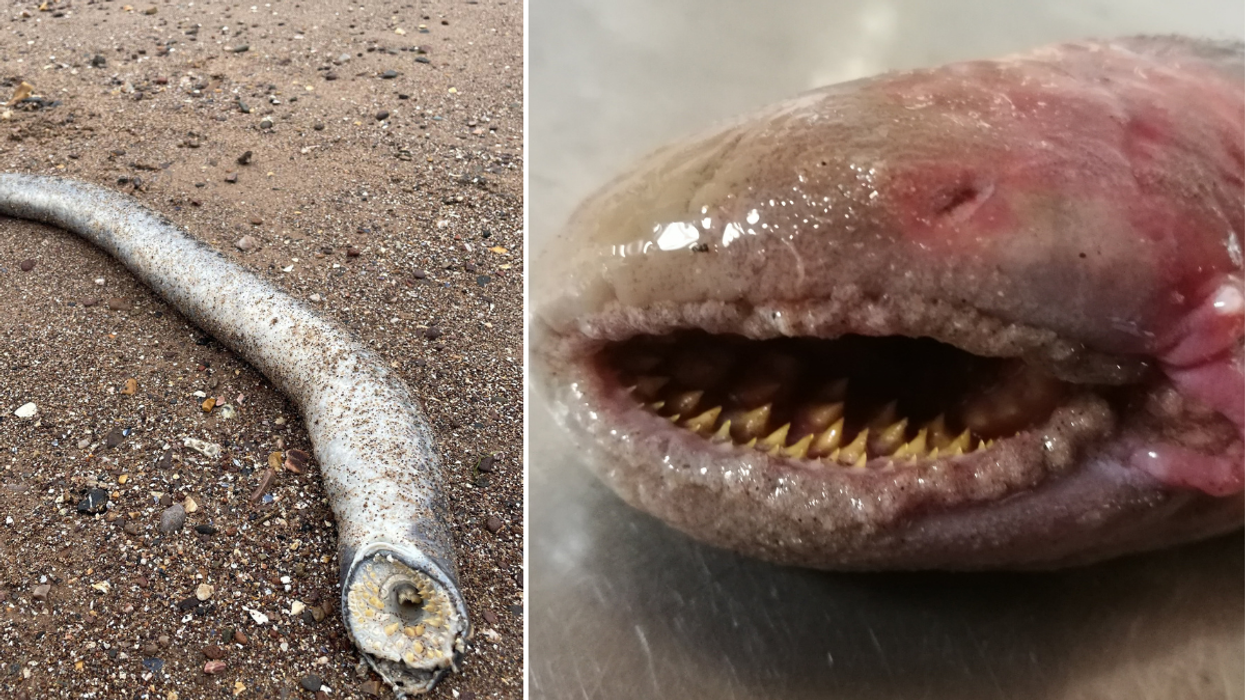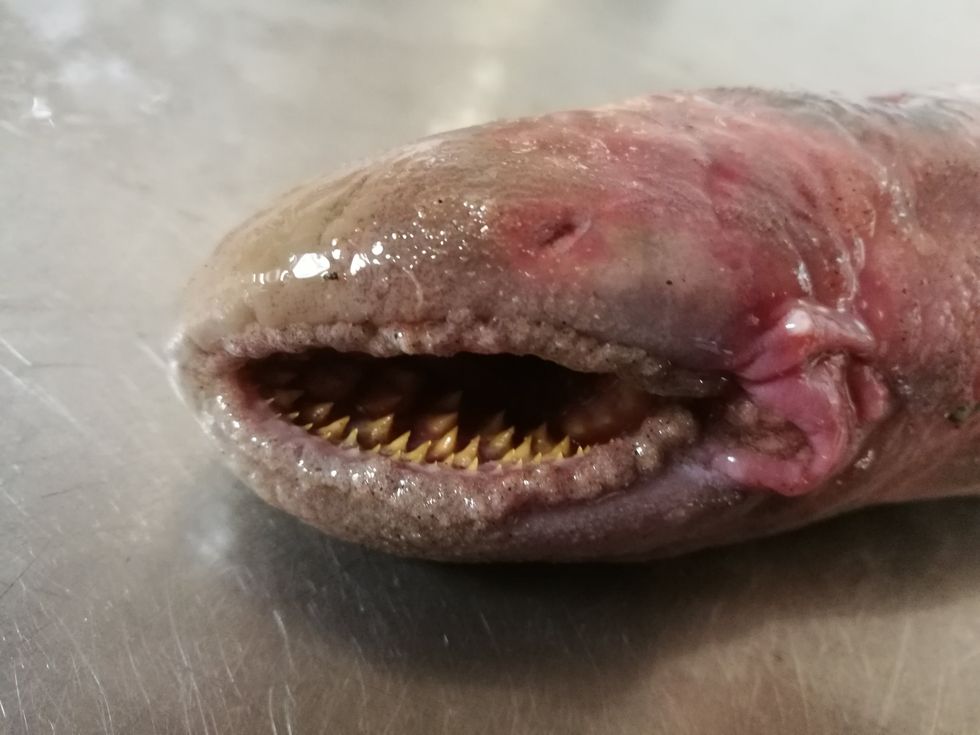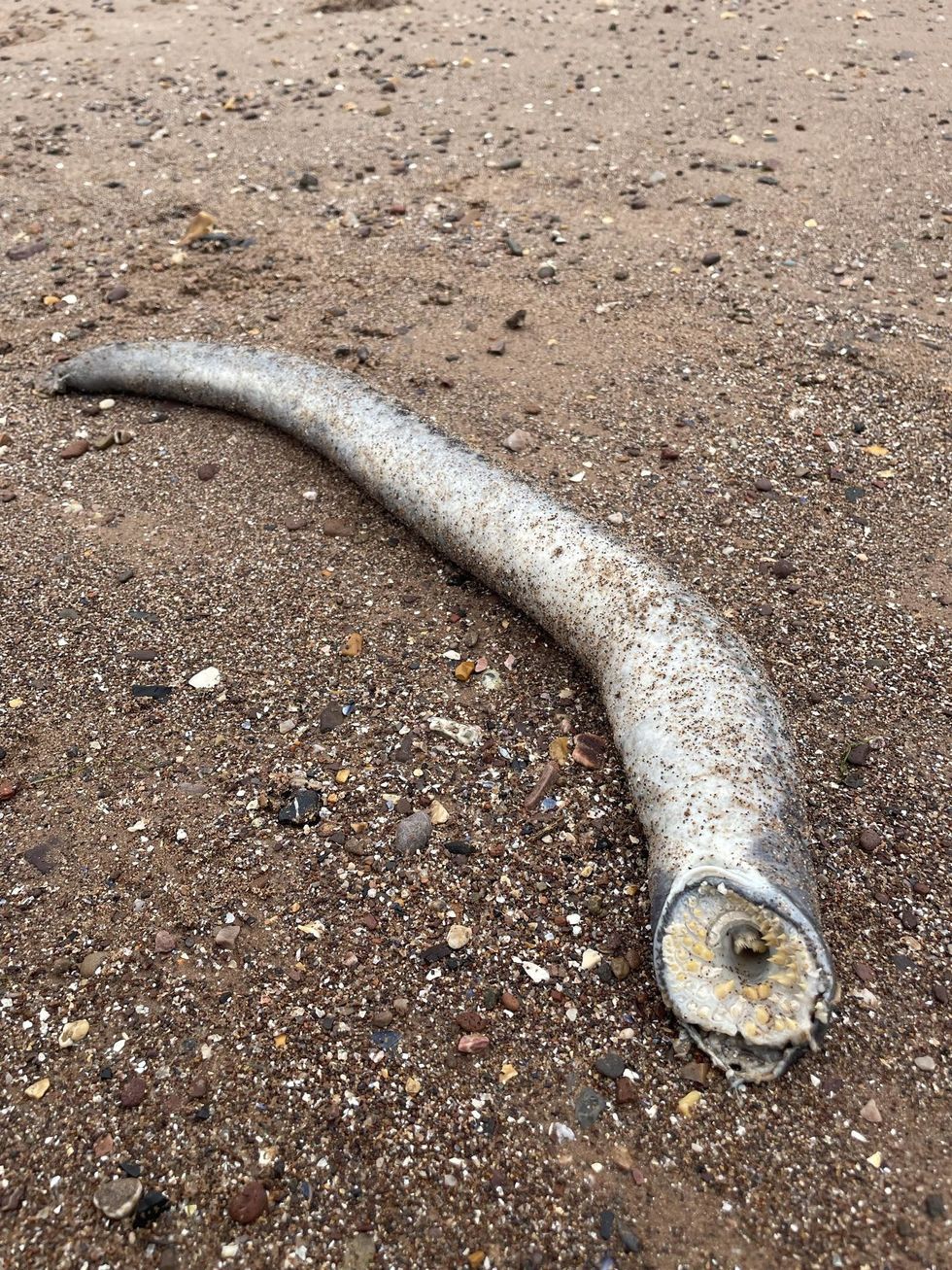Blood-sucking 'vampire' creature with mouth full of swirling teeth found on Devon beach

A sea lamprey - a species known for sucking the blood of their prey - was spotted in Devon
|Pen News

The bizarre creature was spotted near Exmouth Marina in Devon, lying near the tideline
Don't Miss
Most Read
A blood-sucking 'vampire' creature with a mouth full of swirling teeth has been found on a British beach.
The sea lamprey - a species known for sucking the blood of their prey - was spotted on the beach near Exmouth Marina in Devon.
Will Miles, 26, encountered the bizarre creature and said: "It was very noticeable, lying in the centre part of the beach near the tideline – I was on a walk after work.
“It was like a hugely oversized leech with a sucker full of sharp, inward-pointing teeth.”

"It was like a hugely oversized leech with a sucker full of sharp, inward-pointing teeth"
|Pen News
Once widespread in the UK, the sea lamprey are now rare, with their decline blamed on low water quality and man-made barriers in the rivers where they breed.
Miles, a warehouse worker from Bovey Tracey, estimated it was about 80cm long – just short of the height of an average two-year-old.
“I was very surprised,” he said. “I’d never seen one washed up before and expected I never would.”
Keen to share his strange discovery, Will posted a photo on a Facebook page for naturalists.
And though some correctly identified the elusive species, others thought it looked like something out of the blockbuster Dune films, based on Frank Herbert’s sci-fi novels.
“Looks like the sandworm from Dune,” wrote one person.
LATEST DEVELOPMENTS:

Once widespread in the UK, the sea lamprey are now rare
|Pen News
“So that's where Frank Herbert got his sandworms from,” added another.
“Only just seen the film and that’s where my head went straight away,” replied a third.
One person, referring to the fictional world where the series is set, asked: “Is this on Arrakis?”
While others called the creature “Shai-Hulud” – using the name given to the sandworms by the indigenous people of Arrakis, the Fremen.
One joker asked: “Any spice around? I could do with some interstellar travel coming up to the elections.”
For others, the creature was more horror than sci-fi, with one comment writing: “When I say I love the ocean, I really mean I love the surface. What goes on underneath is terrifying, and none of my business.”
“I'm never swimming in the sea again,” said another.
It was also described as a “fish of nightmares” and a “terrifying looking creature”.
Marine biologist Jarco Havermans, who made headlines last year when he became the first person in six years to find a sea lamprey on the Dutch island of Texel, described their life cycles.
He said: “For five years they live embedded in the bottom where they filter-feed detritus. After these five years they metamorphose into an adult sea lamprey which migrates to sea to live as a parasitic fish species on larger fish species and whales.”
The lamprey’s victim does not usually survive the encounter.
“For reproduction they migrate back to the rivers,” he added.










